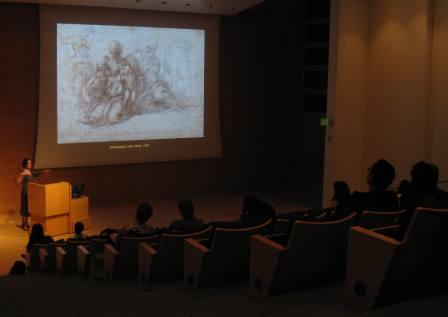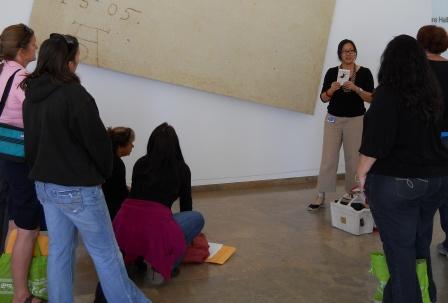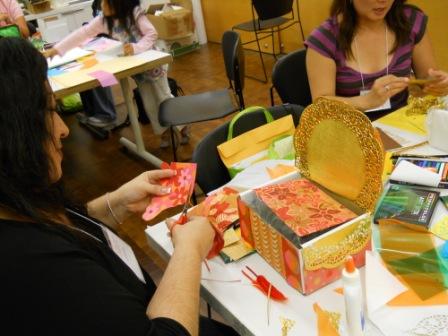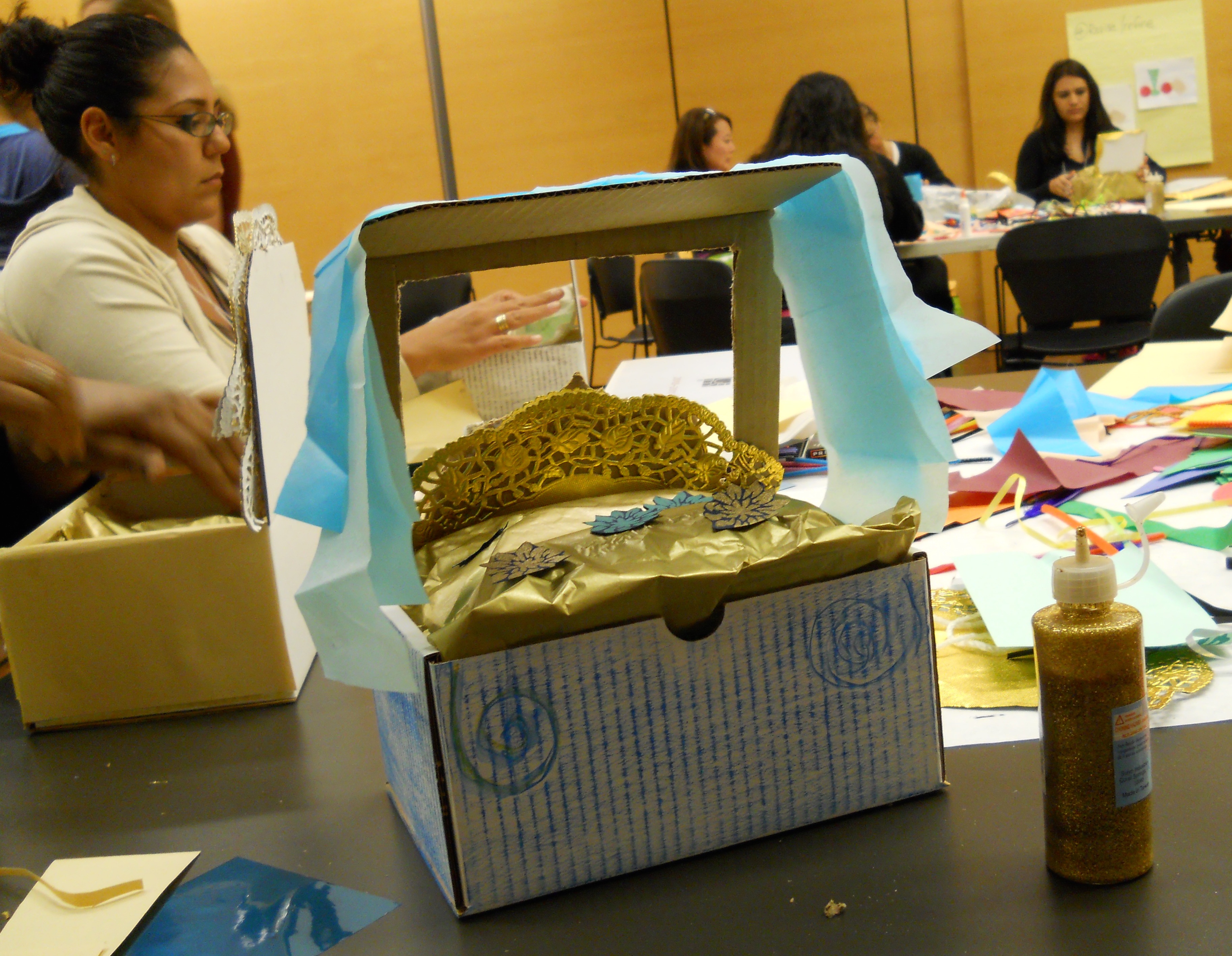Day 3 of the Seminar: Amazing Drawings, Decorative Beasts, and Dream Beds
July 28th, 2010
We started the morning with delicious scones and a drawing by Michelangelo, continued the day with lively discussions about lesson planning and writing activities in the galleries, and rounded out the afternoon with hands-on activities inspired by drawings and decorative arts!
- Teachers set aside the stress of up to 2 hours of traffic to enjoy tea bread, fruit, and coffee before the program started.
- Every morning teachers have the opportunity to explore a variety of media. Today, teachers experimented with black and white charcoal.
- Curator Stephanie Schrader gave an engaging and informative talk about the drawing collection.
- Curator Julian Brook’s tour of the new exhibition of Italian Renaissance drawings was a big hit with the teachers.
- Magnifying lenses in the galleries offered us a closer look at details drawn by Renaissance artists.
- Museum educator Sandy Rodriguez offers suggestions for writing activities with painter Vernet’s A Storm.
- Second and third grade teachers gather around an 18th century bed.
- Gallery teacher and artist Audrey Chan discusses a 16th century drawing of a beetle that inspired contemporary artist John Baldessari.
- After discussing drawings of natural specimens, teachers drew details of succulents and leaves in the Getty’s Central Garden.
- Jasmine Magana, junior at Seattle University and intern extraordinaire, lists vocabulary generated from a discussion of French decorative beds.
- Teachers created their own dream beds by choosing from a variety of colorful paper, ribbons, and assorted collage materials.
- Teacher Rea Young creates a pattern of leaves with red ribbon.
- A second grade teacher proudly displays her dream bed—complete with stairs!
- A finished bed with a blue canopy dreamed up by teacher Antoinette Pippin!
- 3rd-5th grade teachers drew animals with basic shapes in an activity led by museum educator Kelly Williams.
- Artist and museum educator Sandy Rodriguez demonstrates how to create hybrid beasts from basic forms.
- Teachers had fun sculpting Crayola Model Magic into hybrid creatures.
- After teachers sculpted their decorative objects, they “gilded” them with a layer of gold tempera paint.
Categories:


















Julian Brook’s gallery exploration of the Renaissance drawings inspired me to pick up my pencil and start drawing. It is amazing though what you can do with cheap ball point pens with thickening lines, smudging and hatching. I took a class where we did still life drawings with those super cheap black pens and the pictures came out amazing.
The idea of art being meaningful has been modeled throughout this week’s seminar. We have viewed, responded to, and worked on and created activities from pieces of artwork in your museum that fosters student learning from subjects that we have to teach our students on a daily basis. The activities have been authentic because they are important to our school culture, but you have allowed us to create these hands-on activities from the creative corners of every individual mind. Every activity has been relevant because they have connected right back to what is expected in our school culture. I try to approach my classroom in a way that is engaging, meaningful, and relevant. I never have to ask a student more than once to write a letter to their favorite Disney character. Why? What child doesn’t like Disney? Disney is relevant to children. Disney is an authentic tool to a teacher. Writing friendly letters is relevant to the standards. A personal connection that motivates learning is meaningful. One activity that I love to do in the classroom is to create kinte cloths. This is relevant to my students because most are African American. It is meaningful because their parents, friends, pastors, etc. wear kente cloths all the time especially during Black History month. First I pass out a 11 x 4.5 strip of art paper. Then I have my students paint the whole paper one color, wait 10 minutes and paint another color over it. Next I give my students forks which they use to scratch patterns onto the painted paper. Finally we laminate the papers and they are beautiful replicas of kente cloths. Authentic + Relevant = Meaningful.
Last year I had this idea, and I want to try it this year for sure. In our Air and weather science unit the students learned how to make whirl-a-gigs, kites, pinwheels, and weather vanes to observe wind and how it is a form of energy.
The artistic extension to that would be to create a moving garden sculpture powered by wind. The garden sculpture would be a real object, purposeful in that it would be displayed in our school garden and therefore have many opportunities for social feedback.
To do this the students then looked at examples of what one may call “garden folk at” and they saw that the artists used decorations, patterns, symbols and sometimes there was even a narrative. Using recycled materials (CD’s, water bottles, wire hangers, party streamers) and hardware (nuts, bolts, pliers, clips) they can each create a moving and decorative part that either represents them or and idea they want to communicate.
There can be lots of time to explore the mechanics and how the materials interact with nature or interact with each other. Students can bring in other materials from home that they would like to add. (Another Idea is to make hand crank machines. Where you turn a handle and all the connected pieces move. ) You need to create a culture of exploration and inquiry. Giving them time to explore with mediums and encouraging them to see “what would happen if…?”
At the end they fastened together to create one community sculpture as see how it transforms into something new and perhaps unexpected. It would be a very interesting conversation to analyze the piece afterward (to make sure there is that reflection on their own creative process and to hear connections and feedback from others.
But really you could do this with all sorts of outdoor sculpture, moving or not. There or lot’s of inspirational examples of this are all around the Getty Center.